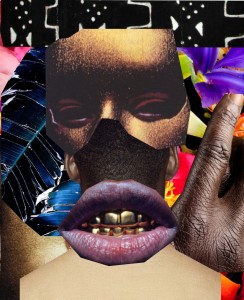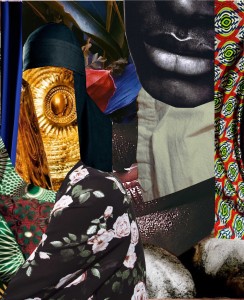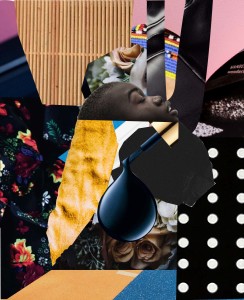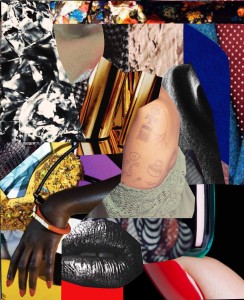Jun
50 Design Thinkers | Rob Lewis
[responsivevoice_button voice=”UK English Female” buttontext=”Listen to Post”]
Name: Rob Lewis
Currently working in: Portland, OR
Occupation: Art Director
IDSL: When did you first fall in love with design?
RL: As a kid; when I realized that my favorite sports teams had representational symbols that were called logos (and that it was fun to draw them). And then again as an adult when I realized that design was a way of living, not just a skill set or output.
IDSL: You talked about how you are more of an Afrosurrealist, and your friend is more of an Afrofuturist. Can you explain the differences between those?
RL: For me, Afro surrealism can reference the past more in order to create a new artistic narrative that is tied/limited only to my imagination. I’m a history major so that appeals to me in a very personal way. I’m still a fan of Afro Futurist work and I still try to incorporate the originality/confidence that I see within it, but I feel like Afro Futurists are naturally more experimental than I am.
Video: Afrofuturism mixes sci-fi and social justice. Here’s how it works.
IDSL: You highlight a recent project you’re working on, your free form collages. They remind me of Romare Bearden. Tell me how both the inspirations of Bearden and jazz music fuel your concept.
RL: I’ve been a jazz fan for half my life so that energy and freedom is something that I will aspire to as long as my hands and eyes still work. Romare Bearden is a hero of mine because he figured out a way to represent his experiences and those of black folks in a very considered/elegant way. I feel like his work was more of a direct response to the black experience in America at that time but he lived through the Harlem Renaissance and the Great Migration so that is understandable.
- Rapping Papers 01
- Rapping Papers 02
- Rapping Papers 03
- Rapping Papers 04
- Rapping Papers 05
IDSL: Tell me about your current partnership with photographer Marge Jacobsen and your photo-centric branding of black identity.
RL: Marge is a close friend of mine. She is so supportive and accepting of all definitions and expressions of creativity & blackness that partnering with her is such a liberating feeling. She is my sister in that we are both black visual artists in America. We want the same things, to make people see the work that black artists/designers are doing as valid, and beautiful as well as empower black people to step in front of the camera and allow themselves to be seen as the works of art that we are.
IDSL: How do you think about your work?
RL: I think about it as a constantly evolving thing. I have certain foundations and things I always come back to but I have to think about it as ever changing. I can’t wait to look back at things 30 years from now because that means I’ll have achieved mastery of something. That’s what I’m interested in, putting in decades of energy and time. Trying to please my artistic heroes that watch from the spirit world and give me guidance.
IDSL: We visited the Independent Publishing Resource Center (IPRC). This place is special in that it houses an extremely large ‘zine collection, as well as vintage letterforms that go back to the early 1900s. Why do you use this technique, even in the digital age?
RL: It’s really out of a lack of training/interest in digital methods. I didn’t start studying design until I was done with my undergraduate education. I know enough digital techniques to function as a professional art director in 2016 but what really makes me happy is using my hands, getting physical with my work. There is a feeling of accomplishment that comes with hand setting/inking type and manipulating printing presses that are centuries old in their design that I will always crave.
- the IPRC.
- the IPRC.
- Vintage letterpress machines
- This one of the largest zine collections in the country.
IDSL: Where do you see design going?
RL: That is a question I hope to be able to answer in a few years 🙂
50 Design Thinkers is a series on IDSL documenting 50 modern African American graphic designers, in 50 states across the United States. IDSL aims to cultivate a better understanding of how designers come to their solutions, and how modern black graphic designers are helping to shape that the world we live in: The digital age. Images courtesy of Rob Lewis.











